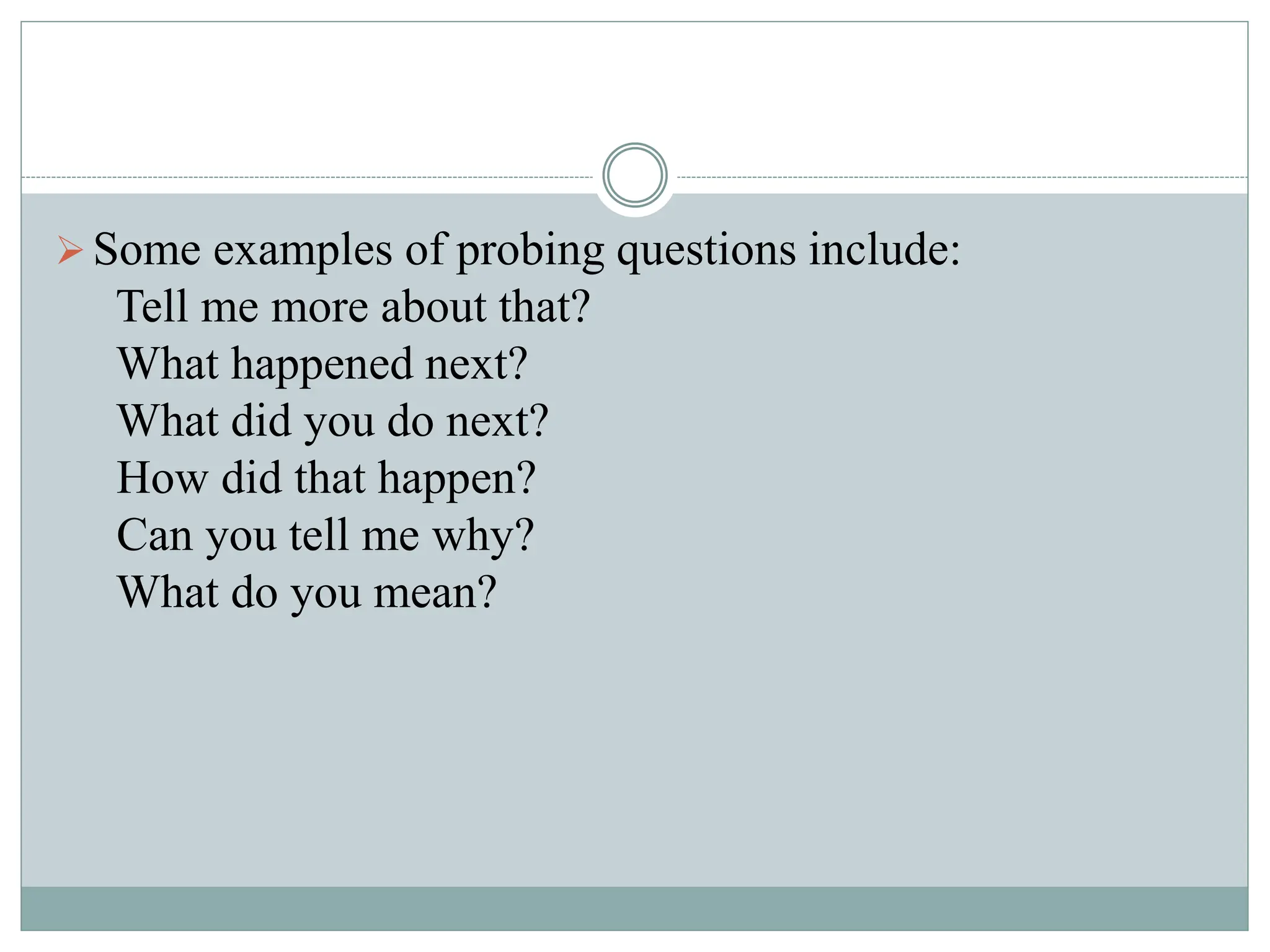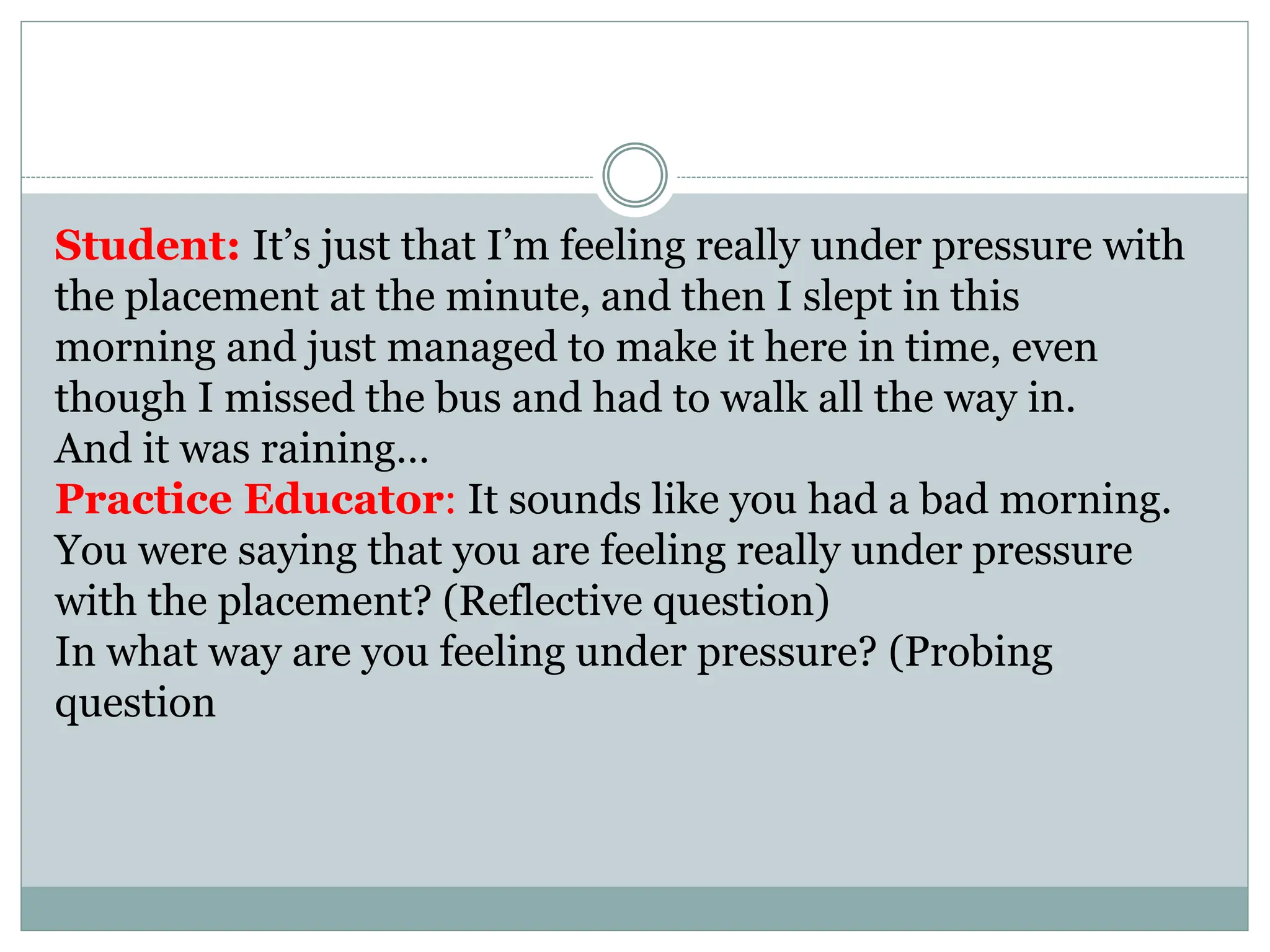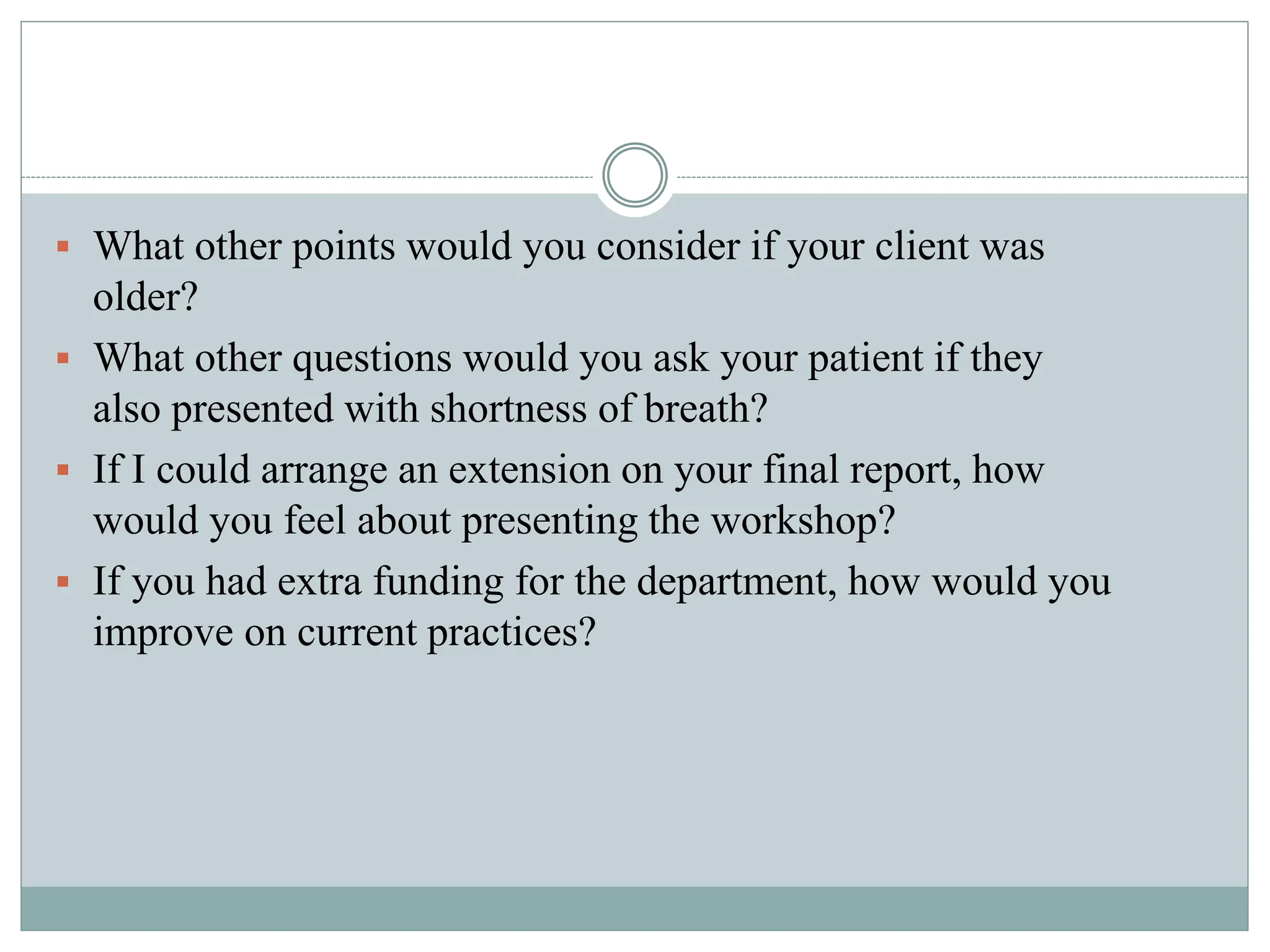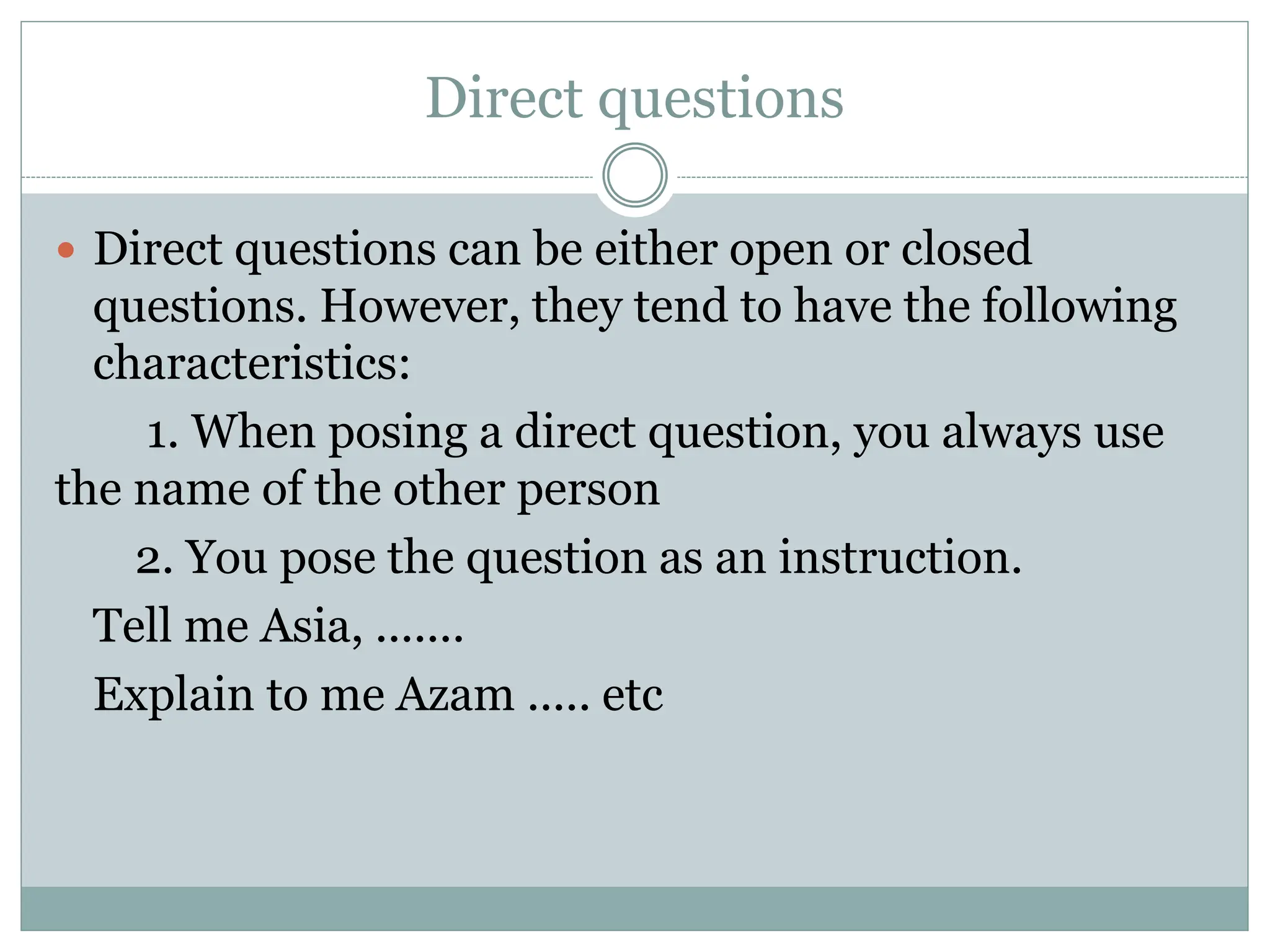This document discusses the art of questioning and provides information on different types of questions and techniques for using questions effectively. It outlines 10 uses of questions, including to stimulate thinking, motivate learners, diagnose difficulties, and encourage application of concepts. The document describes characteristics of good questions and techniques for questioning, handling responses, and distributing questions evenly. It also defines and provides examples of closed and open-ended questions, probing/clarifying questions, reflective questions, hypothetical questions, and direct questions.




















